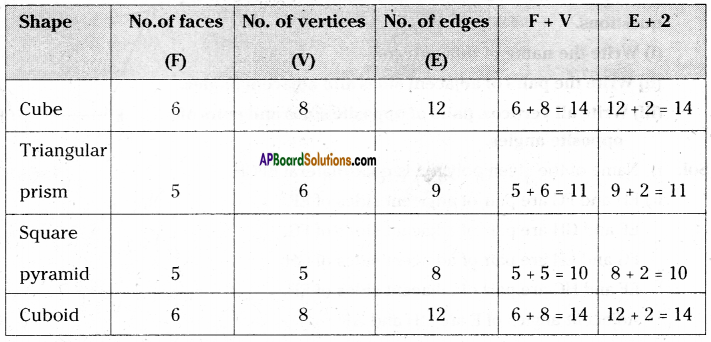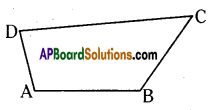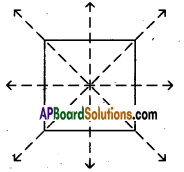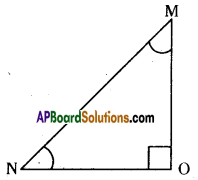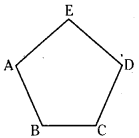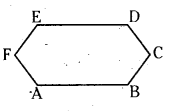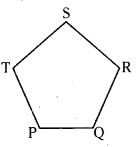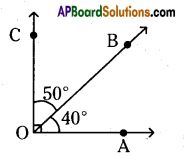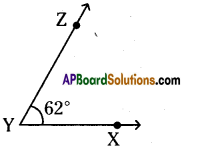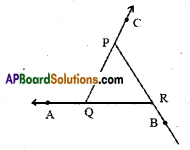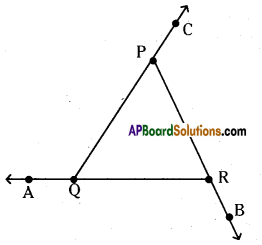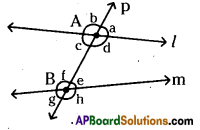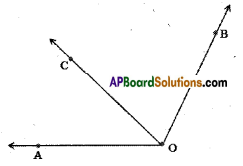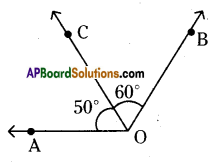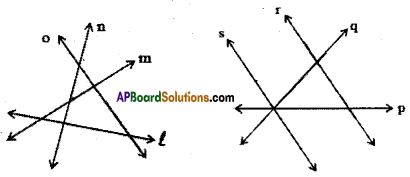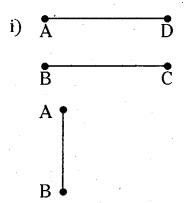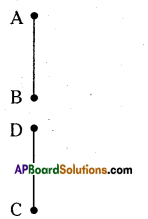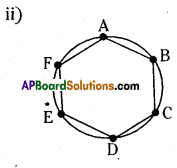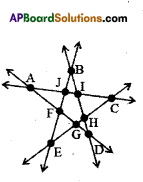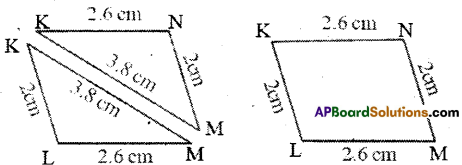AP State Syllabus AP Board 6th Class Maths Solutions Chapter 9 2D-3D Shapes Unit Exercise Textbook Questions and Answers.
AP State Syllabus 6th Class Maths Solutions 9th Lesson 2D-3D Shapes Unit Exercise
![]()
Question 1.
Give examples for each shape in the table.
| Sphere | Cylinder | Cube | Cone |
| 1. | |||
| 2. | |||
| 3. | . |
Solution:
| Sphere | Cylinder | Cube | Cone |
| 1. Marbles | Chalk piece | Dice | Heap of rice |
| 2. Laddu | Road roller | Ice cube | Tent |
| 3. Tennis ball | Pillar of building | Rubic cube | Joker cap |
Question 2.
Look at the adjacent figure and answer the following questions,
(i) What is the name of the triangle?
(ii) Write all sides, angles and vertices of the triangle.
Solution:
i) Name of the given triangle is ΔPQR.
ii) The sides of ΔPQR are \(\overline{\mathrm{PQ}}, \overline{\mathrm{QR}}\) and \(\overline{\mathrm{PR}}\) .
The angles of ΔPQR are ∠P, ∠Q and ∠R.
The vertices of ΔPQR are P, Q and R.
![]()
Question 3.
Look at the adjacent figure and answer the following questions.
(i) Write the name of this polygon.
(ii) Write the pairs of adjacent sides and adjacent angles.
(iii) Write all vertices, pairs of opposite sides and pairs of opposite angles.
Solution:
i) Name of the given polygon is quadrilateral EFGH.
ii) EH and FG are pair of adjacent sides of EF.
EF’ and GH are pair of adjacent sides of FG.
FG and EH are pair of adjacent sides of GH.
EF and HG are pair of adjacent sides of EH.
Adjacent angles of E are ∠H and ∠F.
Adjacent angles of F are ∠E and ∠G.
Adjacent angles of G are ∠F and ∠H.
Adjacent angles of H are ∠G and ∠E
iii)Vertices of the quadrilateral EFGH are E, F, G and H.
Opposite side of EF is GH.
Opposite side of FG is EH.
Pairs of opposite angles are ∠E, ∠G and ∠F, ∠H.
![]()
Question 4.
Say true or false.
(i) We can locate only one centre in a circle. [ ]
(ii) All chords are called diameters. [ ]
(iii) A square pyramid has squares as its faces. [ ]
Solution:
i) True
ii) False
iii) False


